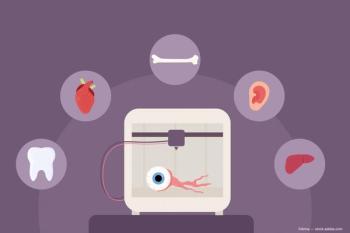
- Ophthalmology Times: November 1, 2020
- Volume 45
- Issue 18
Changing patient conversations around cataract surgery
Pandemic is driving — and accelerating — changes in how ophthalmic care is delivered to patients.
Special to Ophthalmology Times®
The ongoing fallout from the
For example, although many patients have been comfortable with resuming medical appointments, a significant percentage have not.
About 12% of our patients who were due for appointments recently said they were not ready to come back due to fears about the virus. For those who do come back, in-office appointments carry new requirements for physical distancing and cleaning between patients.
Related:
Both trends are pushing ophthalmologists to become more efficient with patients’ time in the office and to consider moving all or part of the exam to a digital platform.
COVID-19 has also accelerated changes that were already in motion due to prepandemic technological shifts.
Doctors and staff were already adapting patient education and informed consent procedures based on the availability of femtosecond lasers, advanced-technology
Moreover, the simply pandemic provides a new impetus to innovate and get these procedures right—for both patient and practice health.
Moving patient education to the home
Many of the decisions we ask patients to make around
We also need to spend time discerning patient interests and communicating the value of new technologies.
How to accomplish all this while reducing time spent in the office?
The answer lies in web-based solutions that facilitate and automate patient communications before patients even arrive.
Related:
Several years ago, I founded a company called MDbackline to do just this. Some other companies, including Surgiorithm, Patient Pending, and Rendia, provide varying levels of digital content and/or automated outreach as well.
These services, for example, can detect an upcoming
We can use the answers to collect history and demographic information, further streamlining time spent in the office.
But I think the greatest advantage is that we are able to provide education when the patient is more receptive and relaxed.
We find that when this advance communication happens, there is a meaningful improvement in patients’ understanding of
Reducing the need for drops
Postoperative antibiotic and anti-inflammatory eye drops have historically been very important to the safety and efficacy of
We know that drops are expensive, uncomfortable, and a hassle for our patients to use. They often miss doses, put in too many drops at once, or hit the cheek instead of the eye.
Our research shows that 15% of patients who have had
For us as clinicians, an adverse effect such as stinging on instillation may seem trivial, but it can have an outsized influence for patients.
Related:
What we consider to be a minor symptom can be significant because it stands in the way of adherence, frightens patients, and colors their perception of their medical care.
In the current environment, all the typical challenges with eye drops are compounded by barriers to pharmacy access, less available family and caregiver assistance, and patient concerns about touching their eyes and face during the pandemic.
For all these reasons, I believe the demise of eye drops for the delivery of chronic and postoperative therapies is on the horizon.
In our practice, we increasingly rely on sustained-release (SR) drug delivery technologies such as dexamethasone injectable solution 9% (Dexycu, EyePoint Pharmaceuticals), a bioerodible intracameral implant that is injected into the ciliary sulcus at the end of cataract surgery (Figure 1), where it delivers a tapering dose of steroid dexamethasone for up to 30 days.
This has eliminated the need for patients to use steroid drops, and in many cases also eliminated the need for a nonsteroidal anti-inflammatory drug (NSAID) drop. I still prescribe NSAID drops for high-risk patients, but in most cases have eliminated postoperative topical anti-inflammatories altogether.
Our practice is also moving toward intracameral antibiotics at the time of surgery, which eliminates another postoperative
Patients overwhelmingly prefer this approach, and it has greatly reduced staff time spent reviewing the drop schedule and dealing with substitutions, refills, and medication questions.
Related:
There are several other SR technologies available now, and many others in development. The intracanalicular insert (Dextenza, Ocular Therapeutix) also provides postoperative steroid after
Allergan’s Durysta delivers bimatoprost for about 3 months for
All these SR technologies are largely invisible to patients, who only know what they do not have to do, which is put in those dreaded drops.
Impact of telemedicine
As we go forward, I expect to see continued expansion of telemedicine in ophthalmology. I know some doctors are conducting
There are some downsides to this approach, such as the inability to check IOP or examine the anterior chamber for cells.
However, even an external iPhone camera can give the clinician a pretty good idea of the absence or presence of major problems after surgery.
Related:
Three factors are needed for consistent use of telemedicine in ophthalmology: patient acceptance, appropriate clinical tools, and regulatory support.
During the pandemic, patients have certainly been willing to consider this type of appointment to avoid unnecessary virus exposure. The government has relaxed HIPAA guidelines and allowed Medicare reimbursement for telehealth visits.
If this continues, we will likely see a booming market for new clinical tools to facilitate more exam components, such as remote IOP measurement and
There was little incentive for manufacturers to develop these tools for us when we couldn’t get paid for a telemedicine visit, but if the regulatory support continues, I believe the technology will follow.
Despite the current challenges to ophthalmic practice, I am optimistic about the future.
Better communications and new tools for
Read more
About the author
John A. Hovanesian, MD
e: [email protected]
John A. Hovanesian, MD, is in private practice at Harvard Eye Associates in Laguna Hills, California, and serves as a clinical instructor at the UCLA Stein Eye Institute. He is a paid consultant for Allergan, EyePoint Pharmaceuticals, and Glaukos Corporation and has an equity interest in MDbackline.
Articles in this issue
almost 5 years ago
Investigators study home-based monitoring for exudative AMDalmost 5 years ago
Ocular gene therapy offers hope for inherited retinal diseasealmost 5 years ago
Good nutrition optimizes ocular surface in premium cataract patientsalmost 5 years ago
Extended depth-of-field IOLs: Clarifying current nomenclaturealmost 5 years ago
Investigators show long-term visual declines in DME eyesabout 5 years ago
Developing retinal technologies strengthen visualizationabout 5 years ago
Building a brand is key to developing successful practiceabout 5 years ago
Planning is important — even when “nobody knows nothing”Newsletter
Don’t miss out—get Ophthalmology Times updates on the latest clinical advancements and expert interviews, straight to your inbox.














































.png)


